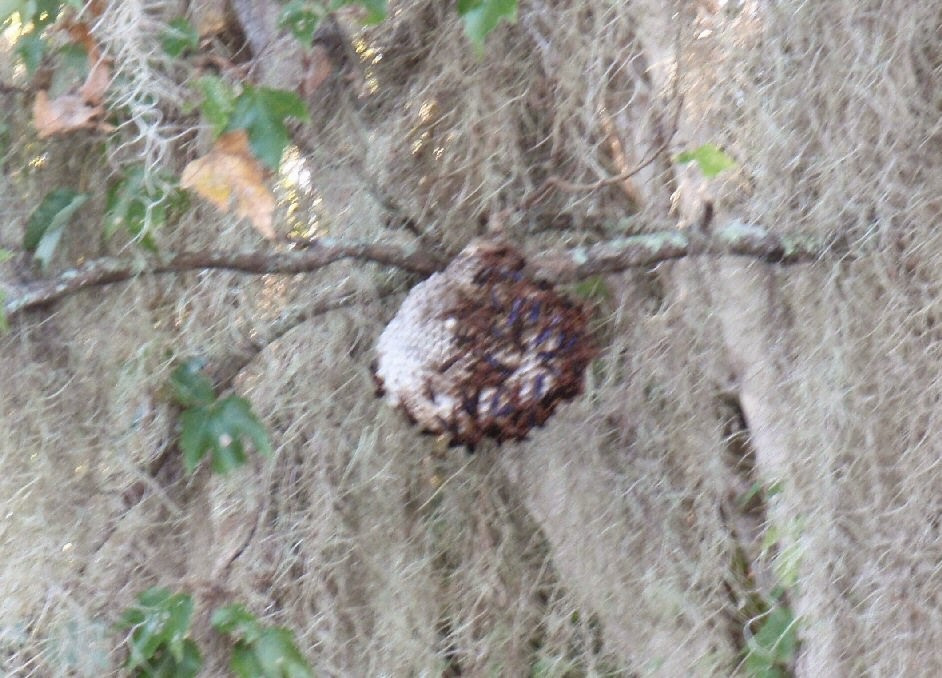"Withlacoochee" means either "crooked" or "big-little" river; "big-little" describing the river as a series of streams and lakes. There are two Withlacooche River's in Florida, the north one, which begins in Georgia and joins the Suwanee River, and Withlacoochee South. Withlacoochee South begins at Green Swamp, near Polk City and moves north and west for 141 miles before entering the Gulf of Mexico by Yankeetown. The river passes through several preserves. Expedition paddlers should be aware of the 76 mile long paddling trail along the river. A whole
series of charts is available here. There's also a 46 miles long paved trail which borders part of the river.
We didn't do the entire paddle trail, (I don't suppose that's any real surprise) instead we just did a short shady section. Unfortunately, the section we did was just beyond where the trail ends, so we used a screen shot from Google Maps to guide us.
 |
| Map: Goldendale is the green dot, Centennial is just west of 41, and we turned around at 484, by the canoe logo. |
Even though we were doing a short section, we chose to rent longer kayaks for the trip. We rented from
Aardvark Kayaks in Crystal River, the same
Aardvark Kayaks, owned by Matt who guided us through Ozello in a prior visit. It was a last minute decision, so most of his fleet was out, but he had some nice Eddylines for us to use: a Fathom, and a Raven. Yes, they were more boat than the water required, but they were a fun paddle.
 |
| The launch at Goldendale |
We began at Goldendale Boat Ramp,a few miles west of the last ramp shown on the Florida trails map.
It was a quiet, peaceful ramp, the road lined by live oak draped in Spanish moss, which even at 10AM cast shadows over the launch area.
And it was a quiet shady paddle. We spent some time in the wider center canal but, to avoid bass boats and find more shade, we often chose to paddle the tiny side canals. Turtles and herons were sprinkled along the shoreline, but there was also this:
It's a paper wasp; Polistes annularis. Like other paper wasps, it likes to build nests over water, to minimize sunlight on the nest. Though this wasp is found as far north as New York, and west to Texas, unlike the paper wasps I'm familiar with, it doesn't build the insulating overcoats. But it does cluster many nests in the same area. And what I saw along the Withlacoochee was small nest after small nest, one per tree, each a few feet off the water, just waiting for a shade seeking paddler to hit. So you've been warned...
We took a break at Centennial Park in Dunnellon, plainly the launch
site of choice. While we rested, kayaks and motor boats came in, and their replacements
launched, while one motor boat rumbled over and over in the vain hope
that this time the engine would catch.
 |
| Look there are air boats too! I'm headed downstream and Centennial's ramp is just on the other side of the bridge. |
From Centennial Park is was a short distance to Rainbow river, where the clear spring waters joined the tea colored Withlacoochee.
As I had while paddleboarding two days earlier, I could again see turtles and fish swimming beneath me.
This cormorant was standing guard on the cedar as we went upstream (within 6 feet of it), and was still there when we headed back. We nicknamed it the "toll collector".
Sand Hill Cranes occupied an island in Rainbow River.
 |
| Two out of three cranes |
We didn't go far along Rainbow River, just to another kayak launch, at SR484, before turning back.
A cool discovery on the return trip was this neat little alligator sunning itself on a mat of grass.
A closer look determined that it wasn't just one little gator, but a few more. We then realized there was probably a mother gator somewhere nearby, and continued on our way before the little guys could start clicking in distress.
 |
| How many siblings can you spot? |
|
All in all an entertaining paddle; lots of varying wildlife, plenty of shade. Another adventure displaying the great variety in paddling options in the Crystal River area.
Links:
Withlacoochee River Florida - Wikipedia
Withlacoochee River (south) Paddling Trail Charts
Polistes annularis wikipedia
Summary: Launch at
Goldendale Launch, parking for for about 10 cars, no facilities. Stop at the launch at
Centennial Park, Dunellon. Toilets, water, picnic table and more parking available. 9.6 miles by our GPS, unsure which canals we used.
Meanwhile in Maine: Our power was restored late Wednesday by a hard working crew. I thought we might get a paddle in, but it was just in time for a couple of cold rainy days. We've trimmed and moved fallen branches from the yard, the road and the path to the water, and when we're done with that we're usually achy enough for the day.


























































